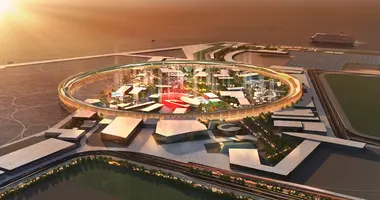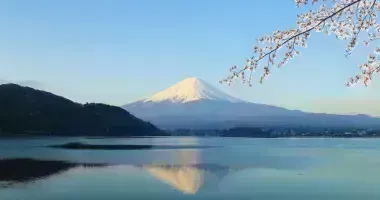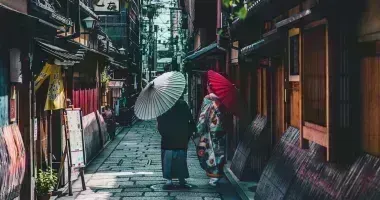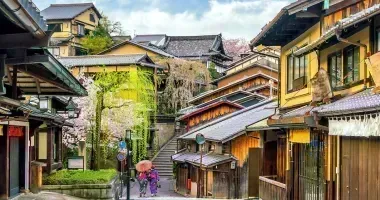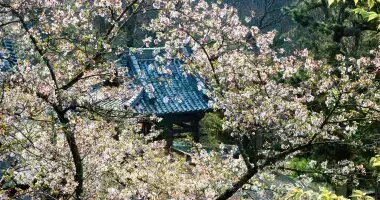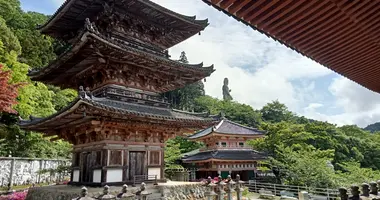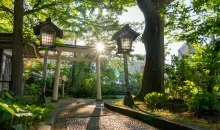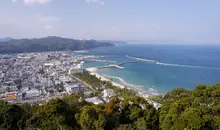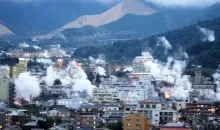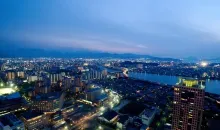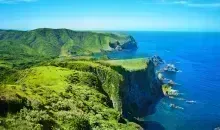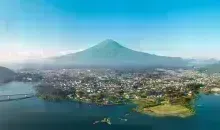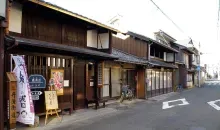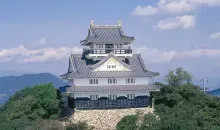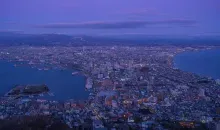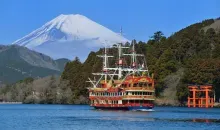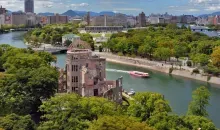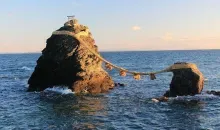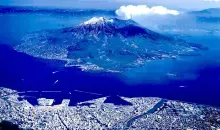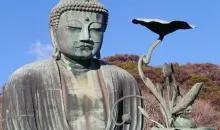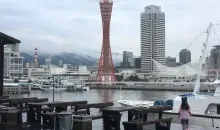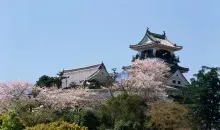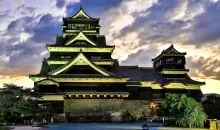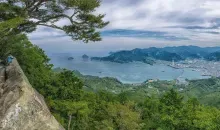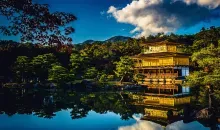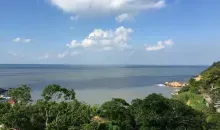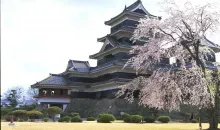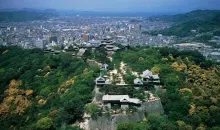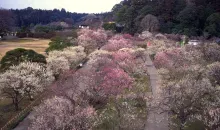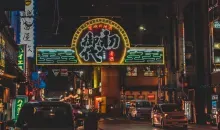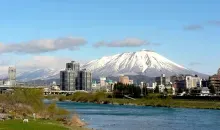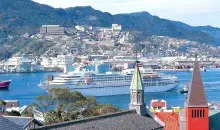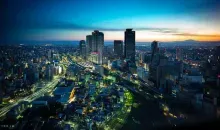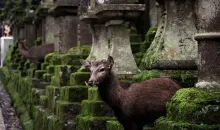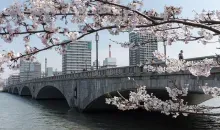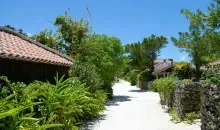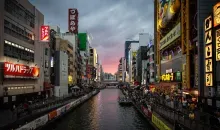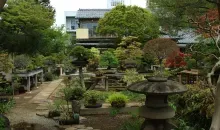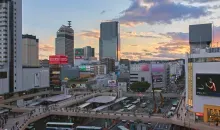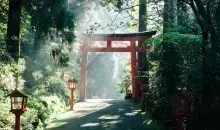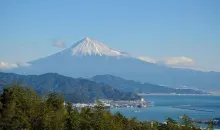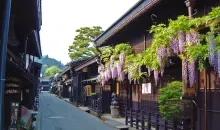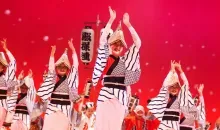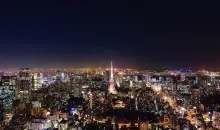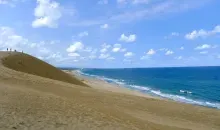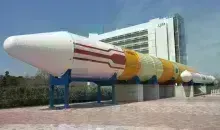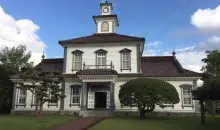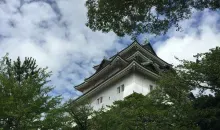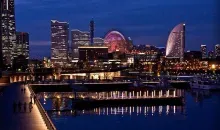Akita 秋田
- Published on : 04/09/2020
- by : test
- Youtube
Local Time 09:45
Symbol : sunny_cloudy
Temp : 25.1°C
Date : Wednesday
Symbol : sunny_cloudy
Temp : 28.8°C
Date : Today
Symbol : sunny
Temp : 28.4°C
Date : Tomorrow
Symbol : sunny_cloudy
Temp : 29.8°C
Date : Saturday
Local Time 09:45
Symbol : sunny_cloudy
Temp : 25.1°C
Date : Wednesday
Symbol : sunny_cloudy
Temp : 28.8°C
Date : Today
Symbol : sunny
Temp : 28.4°C
Date : Tomorrow
Symbol : sunny_cloudy
Temp : 29.8°C
Date : Saturday
Akita, situated in the north-west of Japan near Aomori, is a mainly rural prefecture noted for its long, snowy winters, Akita breed of dogs, onsen hot springs, delicious local foods and fine sake.
Nearest Airport
Akita Airport (AXT)
- 40 minutes by Limousine Bus
Train Stations
Akita Station (JR Shinkansen Komachi and JR Ou, Uetsu, Oga lines)
Akita Travel Guide
Akita city is the prefectural capital and the main point of access for exploring the rest of Akita Prefecture.
Akita city has a population of over 330,000 people and has a number of interesting sights including some superb art galleries. Akita City is also the home of the Akita Kanto Matsuri (秋田竿灯祭り) festival in early August featuring banks of lanterns borne aloft on bamboo poles.
Akita has major transport links with Tokyo, Kakunodate and Aomori and from here you can catch local trains and buses to the hinterland of Hachimantai, Tazawa-ko, Kisataka, the Oga Peninsula, Odate, Towada-ko (on the border of Akita and Aomori prefectures) and Nyuto Onsen.
Things to see and do in Akita City
There are some interesting things to see and do within easy walking distance of Akita Station.
Senshu Park is the former site of Kubota Castle. The large wooded area contains the restored Front Gate of Kubota Castle, the Osumiyagura Turret with a small museum relating to the history of Kubota Castle inside, Iyataka Shrine, Hachiman Akita Shrine, the Senan Tea Ceremony House and the Satake Historical Material Museum with documents, weapons, swords, samurai armor and fascinating old Edo Period maps of Akita on display.
Just off Hirokoji Dori avenue at the beginning of Senshu Park near the castle moat are the Akita Museum of Art (formerly the Akita Prefectural Museum of Art) with its Hirano Masakichi collection, as well as the Municipal Central Library. Across Hirokoji Dori is the Atorion Building containing the Akita Senshu Museum of Art with an annex displaying works by Okada Kenzo.
Walking west towards the Asahi River and the Kawabata entertainment and red-light area are a number of worthwhile museums including the Akarenga Red Brick Folk Museum, housed in the former central branch of Akita Bank. Besides its elegant, Baroque interior the building showcases Akita's most representative arts and crafts including wood block prints by Katsuhira Tokushi (1907-1971) and metal work by Sekiya Shiro (1907-1994).
Walking north from the Akarenga Red Brick Folk Museum is the Akita City Folklore and Performing Arts Center (officially part of the Akarenga Museum) where visitors can see demonstrations of the incredible balancing acts of the Kanto Matsuri festival involving paper lanterns attached to bamboo poles. Festival costumes, masks, musical instruments and posters from the event are also on display. Numerous other unique festivals of Akita prefecture are featured upstairs on the second floor.
Next door is the Old Kaneko Family Home, originally an Edo Period wooden merchant's home and warehouse rebuilt in the 1880s. The tatami-mat interior of the shop front recreates what a traditional store of the times would have looked like and still sells authentic local crafts.
A 500 yen Kururin Pass gives access to the Osumiyagura Turret, the Akita City Folklore and Performing Arts Center, the Akarenga Red Brick Folk Museum, the Old Kaneko Family Home, the Satake Historical Material Museum, the Akita Senshu Museum of Art and the Old Kurosawa House.
Guide To Museums & Art Galleries in Akita
Akita has some superb museums and art galleries to explore which reflect the rich artistic and cultural heritage of the region.
Pride of place must go to the Akita Museum of Art, which opened in 2012 on the site of the old Akita Prefectural Museum of Art and was designed by world-famous architect Tadao Ando. The Akita Museum of Art houses a large collection of the paintings of Tsuguhara Fujita (aka Leonard Foujita) from the collection of the Masakichi Hirano Art Foundation. Hirano Masakichi (1895-1989) was an art collector and a friend of Fujita.
Foujita (1886-1968) led a colorful, bohemian life in Paris before World War II, and even contributed to a League of Nations book for world peace in 1932, but the next year returned to Japan to become an official war artist and ardent nationalist. He returned to France after the war and converted to Catholicism.
The centerpiece of Foujita's art on show is the huge Events of Akita canvas detailing Akita's festivals and changing seasons. The painting measures a staggering 3.65 x 20.5 m (12 x 67 ft) - said to be the largest canvas painting in the world.
The Museum also has many works by European masters such as Goya, Rubens, Rembrandt and Picasso. There are lovely views from the museum cafe across to Senshu Park.
The Akita Senshu Museum of Art in the Atorion Building displays art by artists connected with Akita including Akita ranga (Dutch-style paintings) by Satake Shozan (1748-1785) and his retainer Odano Naotake. Other paintings on display are wood block prints by Hirafuku Suian (1844-1890) and photographs by the celebrated photographer Kimura Ihei (1901- 1974). An annex to the gallery contains modern art by Okada Kenzo (1902-1982), who settled in New York in the 1950s and is known for his "abstract expressionism" with an Asian sensibility.
Shopping In Akita Guide
The main districts for shopping in Akita are the areas around Akita Station and along Hirokoji and Nakakoji streets. The Topico mall at Akita Station is a good place for local souvenirs as is the Akita Prefectural Goods Plaza in the basement of the Atorion Building.
Arts and crafts specific to Akita include Akita Fukizuri Butterbur Stamping, Yabase dolls and Ginsenzaiku silver wire jewelry and Akita ceramics. Akita is famous for its naraoka-yaki pottery typified by drip-type glazing in hues from teal green to cobalt blue.
Around Akita Travel Guide
There are numerous sights around Akita that are worth visiting, most of them easily accessible from the city.
Kakunodate
Kakunodate is an historic Edo Period town with a large number of preserved samurai and merchants' houses. Kakunodate is an easy day trip from Akita, just 45 minutes by Komachi shinkansen or 90 minutes by local JR Ou Line and Tazawako Line trains. It is particularly pleasant at cherry-blossom time.
Tazawa-ko
Tazawa-ko (Lake Tazawa) is Japan's deepest lake and is known for its blueness. There's winter skiing at Tazawako Ski Resort and a cycling course through the woods.
Nyuto Onsen
Nyuto Onsen is famous for its variety of highland hot springs each with a different reputed health effect. Various ryokan provide set meals to go with your leisurely soak.
Shirakami-Sanchi
Shirakami-Sanchi is a UNESCO World Heritage Site containing a 130-hectare (321-acre) virgin forest of Siebold's beech trees, that once grew throughout northern Japan.
The deep valleys, steep, forested, mainly trackless mountain ridges of Shirakami-Sanchi rise to over 1,200 m (3,900 ft) and are home to black bears, the serow (mountain goat), monkeys, and many species of birds including rare hawks and even eagles. The Fujisato World Heritage Center is a 30 minute bus ride from Futatsui Station on the Ou Line from Akita.
Oga Peninsula
The Oga Peninsula is connected with the legend of the namahage, a folk festival now performed by local men wearing grotesque ogre masks and wearing straw capes, who beat a drum while visiting houses on New Year's Eve looking for lazy or naughty children. The Namahage Museum & Oga Shinzan Folklore Museum memorably showcase this tradition.
The Oga Aquarium GAO is an aquarium right on the rocky Akita coastline that, besides Japanese sealife, also has an Amazon section and a polar bear. It is reached in just over an hour by car from Akita or bus from Hadachi Station.
Hachimantai Hot Springs
The onsen area of Hachimantai stretches between Akita and Iwate prefectures and is popular with hikers and skiiers. In spring and summer the Hachimantai area is known for its hiking and alpine plants.
Eating in Akita
Akita has its own regional cuisine with such delicacies as kiritampo - mashed, freshly boiled rice, toasted on wooden skewers - then served in nabe or with miso paste, Iwagaki oysters, shottsuru-kai-yaki a regional hotpot made with a strong-smelling fish sauce, Inaniwa udon noodles, the region's signature gakko pickles and, of course, Akita's renown sake. The area near Akita Station has a number of good restaurants where you can sample the local dishes.
Akita Festivals
Akita Prefecture's main festivals are the day and night Kanto Matsuri in Akita city from August 3-6, the Tsuchizaki Port Festival July 20-21 and the Daishoji Okesa Festival in Yuwa on the third Sunday in August.
Access - Getting to Akita
Trains To Akita
From Tokyo Station or Ueno Station, JR Akita Shinkansen Komachi trains run via Omiya, Sendai and Morioka to Akita. Journey time is 4 hours from Tokyo Station to Akita and the current fare is around 17,000 yen. All seats are reserved. To Hakodate and Sapporo in Hokkaido take the Ou Main Line to Aomori then Super Hakucho Express. The journey time from Akita to Sapporo is around 10 hours, 30 minutes. From Akita Station there are local and Shinkansen trains to Kakunodate and Tazawa-ko.
The Resort Shirakami is a special sightseeing train that runs from Akita via Goshogawa and Hirosaki to Aomori. The Resort Shirakami travels along the 147km-long Gono Line with beautiful views of the Japan Sea coast, the Tsugaru Plain and the Shirakami Highlands. Three types of train with different liveries and set-ups make the journey: the Aoike, the Buna and the Kumagera. The entire journey takes 5 hours. There are 3 services daily with one service running just the Aomori to Hirosaki leg and the other two running from Akita to Hirosaki.
The JR Rail Pass and JR East Pass can be used on the Resort Shirakami but a reserved seat ticket must be purchased separately. All seats are reserved.
Bus To Akita
Aomori has long-distance highway bus links with Tokyo (8 hours) and Sendai (3 hours, 40 minutes) as well as to Yuzawa, Yokote and Noshiro.
Getting Around Akita
Akita city center is small enough to get around on foot, by local bus, taxi or rental cycle. Buses in Akita radiate out from both exits of Akita Station and buses connect to Akita Airport and North Asia University.
Akita bike rental
There are a number of places to rent both cars and bicycles throughout Akita. Bicycles can be hired from the Tourist Information Office opposite the entrance to the Shinkansen and from Cycle Shop Takahashi.
Our tours in Akita
Interested by Akita
Discover other cities to explore


